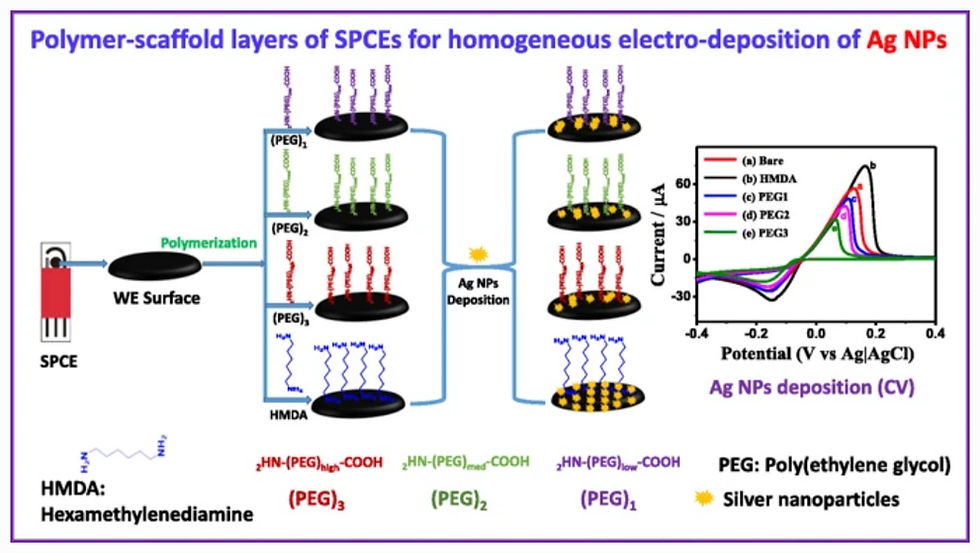Polymer scaffold layers of screen-printed electrodes for homogeneous deposition of silver NPs
- Kotagiri Yugender
- Mar 1, 2020
- 1 min read
A method is described for electrochemical oxidation of polymers on the surface of screen-printed electrodes (SPCE). These act as scaffold layers for homogeneous deposition of silver nanoparticles (AgNPs). Hexamethylenediamine (HMDA) and poly(ethylene glycol) were immobilized on the SPCE surface via electrochemical oxidation. AgNPs were then electrodeposited on the scaffolds on the SPCE. This type of different carbon chain containing materials like PEG and HMDA act as big tunnels for electron mobility and are useful for the homogenous deposition of AgNPs on the SPCE surface without agglomeration. The resulting sensor was applied to the determination of hydrogen peroxide (H2O2) as a model analyte. It is found to display favorable catalytic and conductive properties towards the reduction of H2O2. Cyclic voltammetry and amperometry revealed that the modified electrode performs better than other modified SPCEs. Best operated at a potential of around −0.61 V (vs Ag|AgCl), the amperometric response is linear in the 10–180 μM H2O2 concentration range and the detection limit is 1.5 μM. The sensor is stable and reproducible. The resultant sensor was appplied to toothpaste analysis, and good recovery values were gained.






Comments